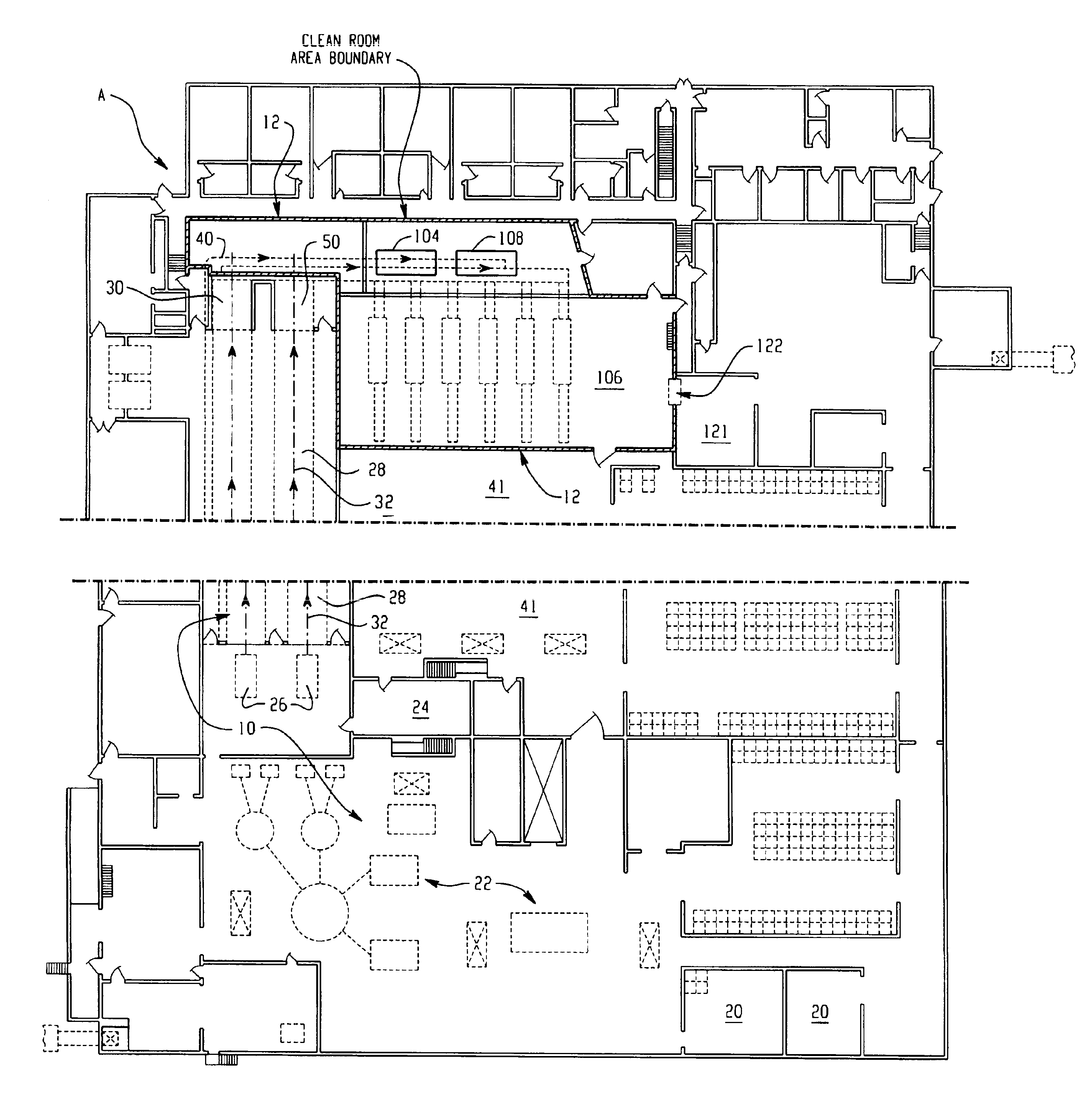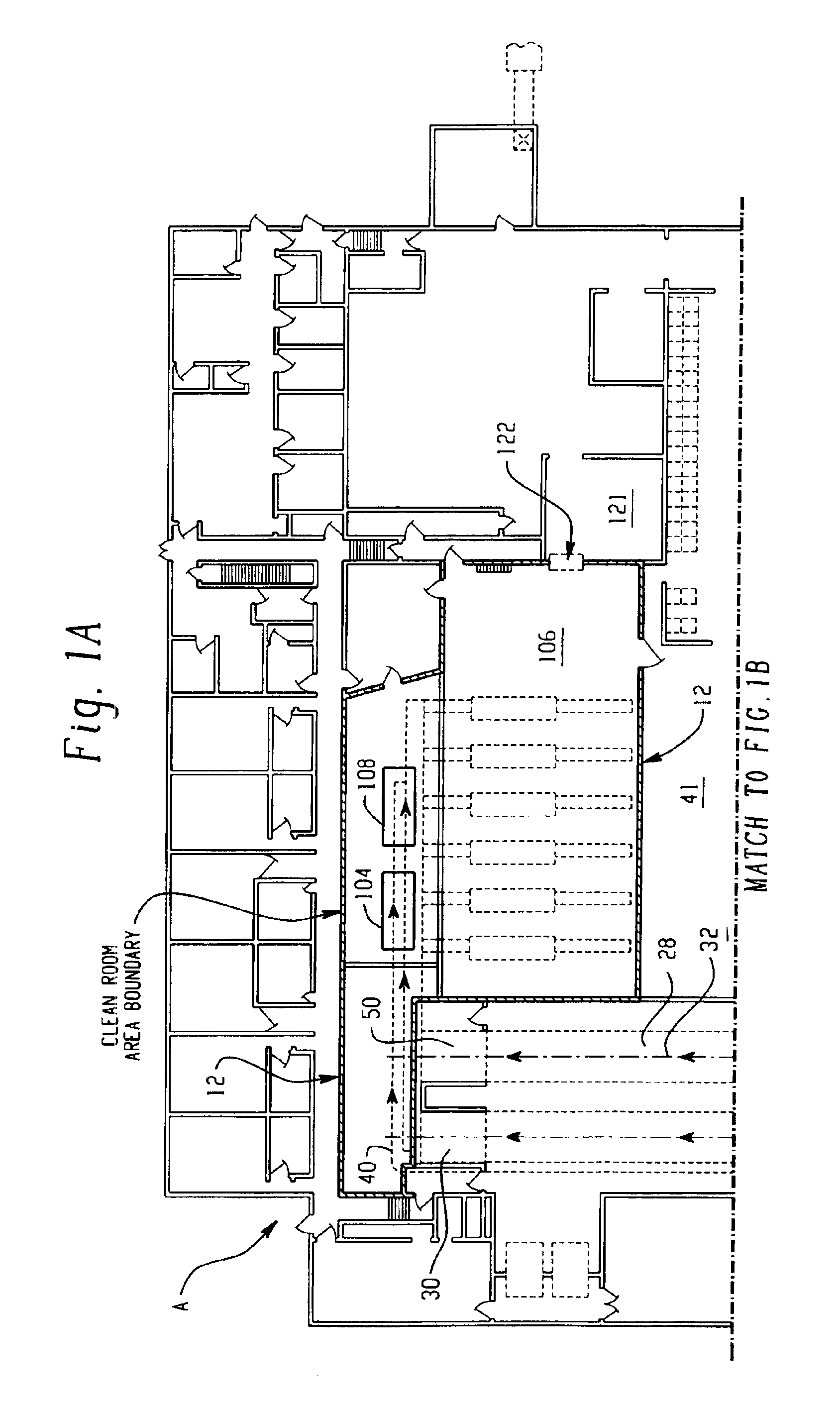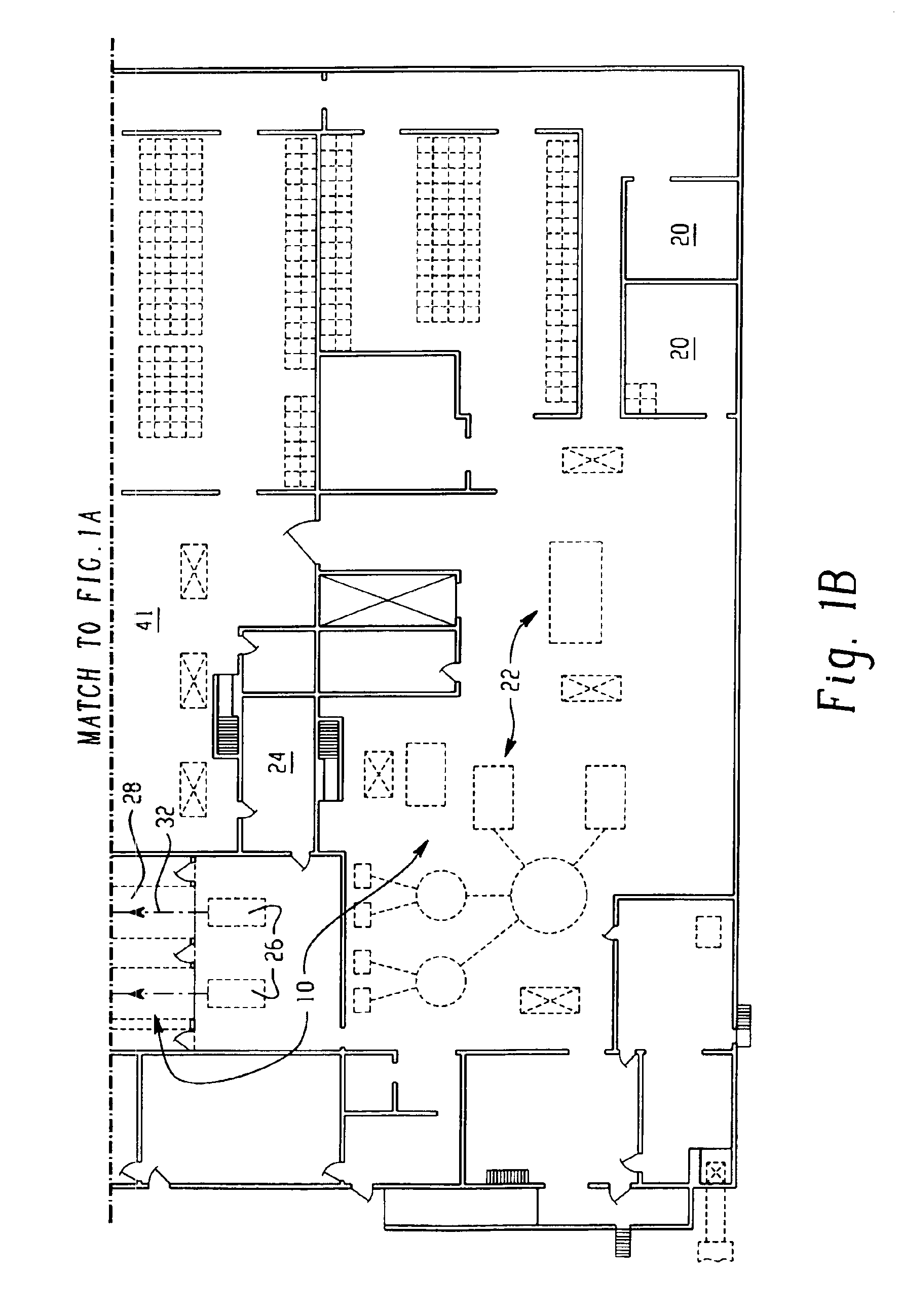System for handling processed meat and poultry products
a technology for processing systems and poultry products, applied in the field of food processing arts, can solve the problems of difficult preservation of food by inhibiting the growth of i>listeria monocytogenes/i>, food poisoning still occurs, and high mortality rate of untreated listeriosis
- Summary
- Abstract
- Description
- Claims
- Application Information
AI Technical Summary
Benefits of technology
Problems solved by technology
Method used
Image
Examples
Embodiment Construction
[0019]With reference to FIGS. 1-2, a food processing system A for processing food products to remove surface contamination of microorganisms, such as Listeria, and maintain the products free of contamination until packaged is shown. While particular reference is made to the reduction in the species Listeria monocytogenes on cooked sausages, such as frankfurters, it should be appreciated that the process is also intended to remove other pathogenic and spoilage microorganisms, such as Aeromonas hydrophila, Aerobacter butzleri, Bacillus cereus, Campylobacter jejuni, Eschericia coli, Salmonella typhimurium, Staphylococcus aureus, and others on a variety of processed foods.
[0020]The term “decontaminate” and similar terms are used herein to encompass both disinfection and sterilization. Disinfection connotes the absence of pathogenic life forms. Sterilization connotes the absence of all life forms, whether pathogenic or not.
[0021]The system A includes a processing side 10 and a “clean” si...
PUM
 Login to View More
Login to View More Abstract
Description
Claims
Application Information
 Login to View More
Login to View More - R&D
- Intellectual Property
- Life Sciences
- Materials
- Tech Scout
- Unparalleled Data Quality
- Higher Quality Content
- 60% Fewer Hallucinations
Browse by: Latest US Patents, China's latest patents, Technical Efficacy Thesaurus, Application Domain, Technology Topic, Popular Technical Reports.
© 2025 PatSnap. All rights reserved.Legal|Privacy policy|Modern Slavery Act Transparency Statement|Sitemap|About US| Contact US: help@patsnap.com



